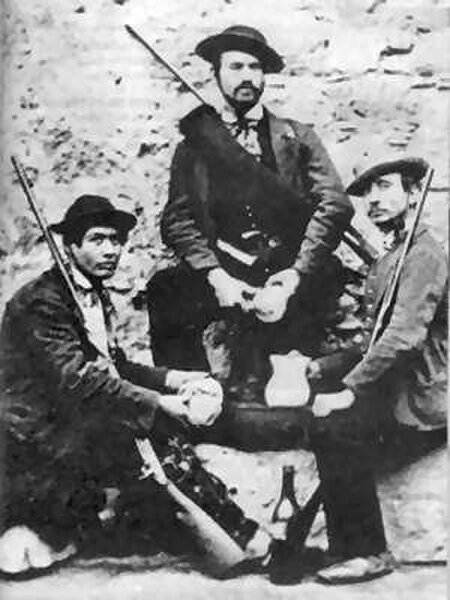Dacoity is a term used for "banditry" in the Indian subcontinent. The spelling is the anglicised version of the Hindi word डाकू (daaku); "dacoit" is a colloquial Indian English word with this meaning and it appears in the Glossary of Colloquial Anglo-Indian Words and Phrases (1903). Banditry is criminal activity involving robbery by groups of armed bandits. The East India Company established the Thuggee and Dacoity Department in 1830, and the Thuggee and Dacoity Suppression Acts, 1836–1848 were enacted in British India under East India Company rule. Areas with ravines or forests, such as Chambal and Chilapata Forests, were once known for dacoits.
Daku (Dacoit) written in Samrup Rachna Calligraphy
A family of dacoits
Banditry is a type of organized crime committed by outlaws typically involving the threat or use of violence. A person who engages in banditry is known as a bandit and primarily commits crimes such as extortion, robbery, and murder, either as an individual or in groups. Banditry is a vague concept of criminality and in modern usage can be synonymous for gangsterism, brigandage, marauding, terrorism, piracy and thievery.
Carmine Crocco's lieutenant Agostino Sacchitiello and members of his band from Bisaccia, Campania photographed in 1862
Members of the Dalton Gang on display following the Battle of Coffeyville in 1892 – left to right: Bill Power, Bob Dalton, Grat Dalton, and Dick Broadwell




